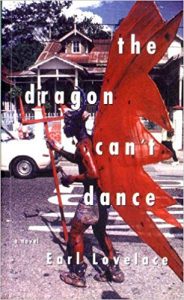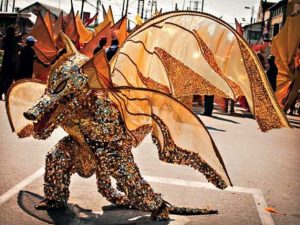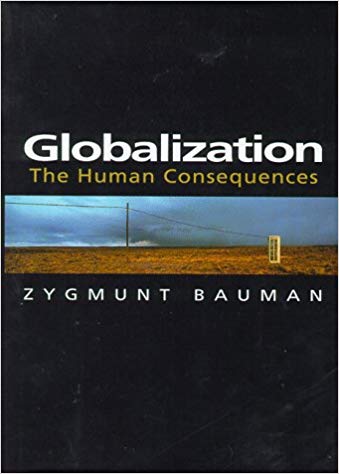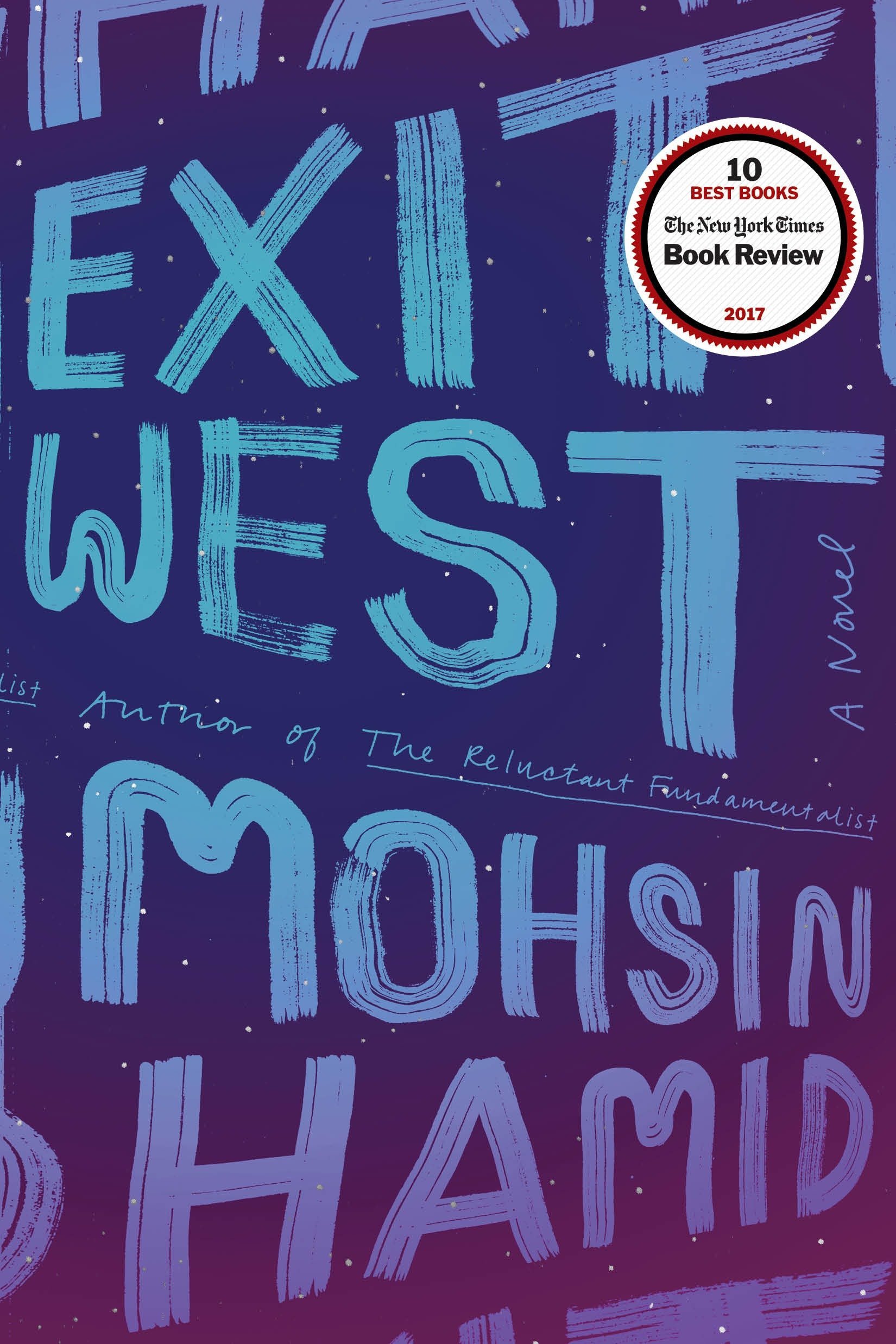Introduction
Earl Lovelace’s The Dragon Can’t Dance is one of the finest Postcolonial novels set in the postcolonial Trinidad. Lovelace, in my opinion, is a chronicler of the Afro-Trinidadian culture and traditions, just as V. S.  Naipual, another Trinidadian author, mostly represents the Indo-Trinidadian aspects of postcolonial Trinidad and Tobago’s national cultures. The Dragon Can’t Dance is set in the Calvary Hill, an urban slum and revolves around the lives of several Afro-Trinidadian characters with a special focus on Aldrick, the artist who plays the dragon in the annual Carnival tradition of Trinidad.
Naipual, another Trinidadian author, mostly represents the Indo-Trinidadian aspects of postcolonial Trinidad and Tobago’s national cultures. The Dragon Can’t Dance is set in the Calvary Hill, an urban slum and revolves around the lives of several Afro-Trinidadian characters with a special focus on Aldrick, the artist who plays the dragon in the annual Carnival tradition of Trinidad.
The Dragon Can’t Dance: Setting and Major Characters
I have previously published on the class divide of the Calvary Hill and how it is better to read the plot and actions of various characters in terms of class within a “field” (Pierre Bourdieu) and within the logic of the field. You can download my full article HERE. Now, I would like to point out that we should not make the mistake of reading the setting of the novel as representative of the entire Afro-Trinidadian population: the setting, as an urban slum, is pretty specific and the actions of the characters within this specific setting are part of the narrative of this particular community.
As a rule, one should never make the mistake of reading a postcolonial novel as representative of an entire community or a nation, for as Kobina Mercer so aptly puts it, and I am paraphrasing here, no work of art can carry the “burden of representation” of an entire culture, community, or a nation. 1
The urban slum is sort of a complete community with its own cultural logic and hierarchy. So, Ms Cleothilda, who plays the queen during the carnival, is the main power broker, as she has the most financial resources, and Guy is a sort of enforcer. On the margins of this community, through with more symbolic power becuase of his role as the artist and the Dragon, is Aldrick who has spent his entire life for his art and has never really had a career or any other capitalistic aspirations. Aldrick is also the main character in the novel and goes through the most acute transformation towards the end of the novel.
Pariag and Dolly, the only two Indo-Trinidadians living in the Calvary Hill are also two significant characters. Mostly, it is the community’s response to their presence and the interactions between Pariag and Aldrick that caught my attention when I first read the novel. Most of us trained to look at things in a culturalist mode would see Pariag’s problems only as an issue of ethnicity and race but in the essay that I pointed to above, I, instead, attempted to read it as a class issue and read Pariag’s place in the community within the logic of the field of Calvary Hill itself. Simply stated, the Calvary Hill community prides itself for its anti capitalist practices–as I suggest in my essay the nature of relationships in the community IS capitalistic but that aspect is masked–and Pariag’s actions, displaying acquisition and money, come into direct conflict with the community’s views of itself. Pariag is another character whose material conditions alter by the end of the novel and it is Aldrick’s final exchange with Pariag in his store that gives one some hope of a future understanding. Now, a word of caution here, we should not make the mistake of reading Pariag as a representation of the entire Indo-Trinidadian community. In . fact the Indo-Trnidadian community is not necessarily a minority. The two major ethnic groups, the Afro-Trinididadians and Ind0- Trindadians, actually form the two large political constituencies in the Trinidad and Tobago and their populations are pretty equal in numbers.
The Dragon Can’t Dance: Aldrick the Dragon!

Source: http://www.ncctt.org/new/index.php/about-ncc/departments/regional/trad-carnival-characters/341-traditional-mas-characters-dragon.html
To me Aldrick is not only central to the novel because he performs the dragon but also because he is the character through whose eyes we experience most of the Calvary Hilll and it is through his reflections about the world that we learn of the very logic of existence on the margins of capital. Aldrick is the ultimate artist: he spends almost and entire year preparing and making the dragon costume that he wears for the three days of the carnival, an event where the Calvary Hill community is heavily represented by its inhabitants. Aldrick is also the one who eventually understands that deep down, even though Ms. Cleothilda and Guy invoke the community all the time, the relationships within the community are deeply capitalistic and that Aldrick and his kind are perpetually being used by the others in the community mostly in the name of the community. Aldrick also understands the precarious nature of Pariag’s status within the community and realizes that part of the reason Ms. Cleothilda and Guy do not like Pariag is because he poses a threat to their precariously created and aptly masked economic status within the community.
Ultimately, as part of the rebel gang, Aldrick also realizes that the the writ of power is so deep upon their souls that even when they had the guns in their hands, “they were waiting for someone to come and tell them what to do.” In the end, it is Alrick who understands the truth behind the communal aspects of his life and toward the end of the novel decides not to be the dragon anymore. I read his reflections as the beginning of a new era for him in which he would, along with the others, start questioning the very logic of the community in which he lives and maybe that would lead to soem changes in how the community works and treats its inhabitants.
Philo the Calypsonian and the Double Bind of Community and Capitalism
Philo is another interesting character, especially in understanding the double bind one faces when one leaves the ostentatious anti-capitalist self presentation of a community such as Calvary Hill and moves into the capitalistic world and succeeds. Since the community’s identity is assumed to be linked to poverty and in an assumed outside to capital,. any move away from the community, especially if one succeeds using the art from considered a representative art form of the community, then success alone cannot justify their actions. Philo, for example, even though successful as a singer has to constantly face this double bind: he has to deliver the songs that would become popular but at the same time, when he returns to the community, he has to prove to them that he is still one of them, a fact beleid by his prosperity. This particular problem is central to most of the poor urban communities whose collective identities are somewhat connected to poverty; it applies on national level too, and thus a move into the middle class in so many ways is costured as the abandonment of the values of the community in some from. This double bind would be an interesting aspect of Philo’s identity to discuss and broaden in our understanding of the double bind faced by other such communities.
Further Reading:
Cohen, Hella Bloom. “The clothing economy of Earl Lovelace’s The Dragon Can’t Dance.”
Puri, Shalini. “Beyond Resistance: Notes Toward a New Caribbean Cultural Studies.”
Raja, Masood. “We is All People: The Marginalized East-Indian and the Economy of Difference in Lovelace’sThe Dragon Can’t Dance.”
Video





[…] “The Dragon Can’t Dance” Reading Notes […]